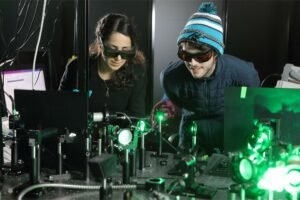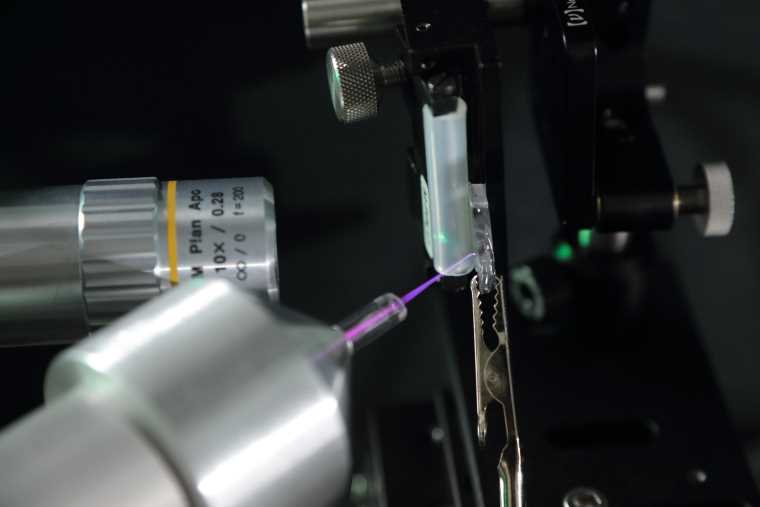The U.S. Air Force is currently developing a “Freeze Ray” to keep computers and other systems from overheating in the harsh environment of outer space.
Working with researchers at the University of Virginia, the Air Force is hoping that the secret properties of plasma, the fourth known state of matter, can be a critical solution to heat issues where conventional cooling methods are unavailable or insufficient.
This is Not Your Grandfather’s Freeze Ray
When Batman’s newest villain, Mr. Freeze, burst onto comic book pages in 1959, his weapon of choice was a deadly freeze ray that, like the name sounds, could freeze his enemies in their tracks. Of course, he was initially known as Mr. Zero, but in 1966 he came into his own as Mr. Freeze, bringing his reign of terror and his namesake weapon into the streets of Gotham City.
Now, a team of researchers working for the U.S. Air Force says they have developed a Freeze Ray of their own. However, unlike the aptly named frigid firearm toted by Bruce Wayne’s 20th Century rival, this freeze ray could solve a critical problem for space travel that is only expected to get worse as humanity ventures deeper and more frequently into the cosmos.
Magical Properties of Plasma Make the Real-World Freeze Ray Possible
Space travel is hard on humans, but it is also hard on electronics. Like systems on Earth, they can become severely damaged if overheating occurs. But unlike Earth-based systems, they don’t always have access to the chemicals or equipment that could keep them from overheating.
“That’s the primary problem right now,” said University of Virginia Mechanical and Aerospace Engineering Professor Patrick Hopkins. “A lot of electronics on board heat up, but they have no way to cool down.”
The same issue plagues high-altitude aircraft, which operate in thin air conditions that are often unable to keep key systems cool.
“With the Air Force and Space Force, you’re in space, which is a vacuum, or you’re in the upper atmosphere, where there’s very little air that can cool,” Hopkins explained. “So what happens is your electronics keep getting hotter and hotter and hotter. And you can’t bring a payload of coolant on board because that’s going to increase the weight, and you lose efficiency.”
Hoping to bridge that divide, Hopkins is tapping into the seemingly magical properties of plasma. Most people may know that the three common states of matter are liquid, solid, and gas. But many may not know that there is a fourth state of matter known as plasma. In fact, plasma is the most common substance in the known universe, as it is the material that stars are made of.
Oddly, this matter, which often reaches the temperature of the sun’s surface, has the unexpected ability, when used correctly, to cause cooling. It was a phenomenon Hopkins stumbled upon when trying to measure the heat changes caused by a helium-based plasma laser.
“So when we turned on the plasma,” Hopkins said, “we could measure temperature immediately where the plasma hit, then we could see how the surface changed. We saw the surface cool first, then it would heat up.”
This result was not only unexpected but seemed to violate the second law of thermodynamics.
“We were just puzzled at some level about why this was happening because it kept happening over and over,” Hopkins explained. “And there was no information for us to pull from because no prior literature has been able to measure the temperature change with the precision that we have. No one’s been able to do it so quickly.”
Some more research using equipment borrowed from the U.S. Navy yielded a surprising result. The plasma seemed to be vaporizing material on the surface and actually releasing heat in the process, much like sweat cools down the body like evaporation.


That breakthrough allowed Hopkins to refine the process until they could repeat the results using a precision laser. This would allow him to target that cooling ability directly onto the surface of electronics and other sensitive components using an actual freeze ray.
“This plasma jet is like a laser beam; it’s like a lightning bolt,” Hopkins said. “It can be extremely localized.”
Such precision, and the ability to generate plasma on a spacecraft without having to bring along coolant or other chemicals, is what makes the idea of a practical freeze ray possible. It is also the reason why the Air Force has funded Hopkins and his team to the tune of $750,000 over the next three years to work out the operational details of the technology and then come up with a plan to make their own freeze ray a viable tool.
The Next Steps Toward a Viable Space-Based System
With their funding in hand, and their initial theories laid out in the journal ACS Nano, Hopkins and his two doctoral candidates, Sara Makarem Hoseini and Daniel Hirt, have already moved on from the equipment borrowed from the U.S. Navy, where Hopkins performed his initial plasma cooling experiments, and have constructed their own facility thanks to the Air Force. Next, they plan to begin testing with gases, metals, and surface coatings that the plasma can target.
“Since the plasma is composed of a variety of different particles, changing the type of gas used will allow us to see how each one of these particles impacts material properties,” Hirt said.
“We haven’t really explored the use of different gasses yet, as we’re still working with helium,” he added. “We have experimented so far with different metals, such as gold and copper, and semiconductors, and each material offers its own playground for investigating how plasma interacts with their different properties.”
The results of this work will likely not be known for another three years. But if they succeed, Mr. Freeze won’t be the only one toting a sub-zero sidearm, much less one that can operate in space.
Christopher Plain is a Science Fiction and Fantasy novelist and Head Science Writer at The Debrief. Follow and connect with him on X, learn about his books at plainfiction.com, or email him directly at christopher@thedebrief.org.

